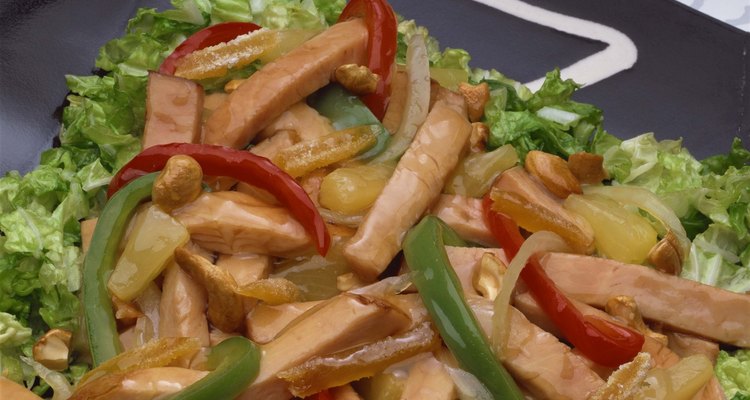
Jupiterimages/Stockbyte/Getty Images
If real life resembled a television cooking show, you'd visit the market every day and lovingly hand-select your dinner ingredients from the best and freshest produce available. The reality for many cooks is far different, revolving around hurried visits to the supermarket whenever time permits. Often that means salvaging vegetables that have been in your fridge a little longer than is good for them. For example, those wrinkled green peppers from your produce drawer might not work in a salad, but they're still fine for cooking.
Why They Wrinkle
When your vegetables are at their freshest, their cells are swollen with natural moisture like water balloons filled to the point of bursting. They press tightly against each other, giving the entire vegetable a firm, crisp texture. When you bite into a perfectly fresh green pepper, the pressure exerted by your teeth pushes those cell walls past their limits, causing them to burst and fill your mouth with flavorful juice. If the same pepper is left in the arid environment of your refrigerator, much of its moisture will evaporate through the skin. The cells sag as the moisture disappears, causing the skin above to pucker and wrinkle.
Picking Them Over
Those wrinkly peppers are softer than fresh ones, but harder to chew because the half-empty cells don't burst under your teeth like they did before. This makes them less pleasant for eating raw, but they're still fine for cooking. Cooking softens the bonds between the cells, giving the pepper a delicately tender texture and making them easy to chew again. Check the peppers carefully before you begin. If you see any soft or bruised spots, those simply can be cut away with a sharp knife. Any visible mold inside or outside the pepper or a pale slime that indicates bacterial activity means that pepper should be discarded.
Roasting Your Peppers
One of the easiest ways to salvage your peppers is to roast them. Just wash the outsides under cold running water, removing any stickers. Dry the peppers, cut away any soft spots and arrange them on a baking sheet. Roast them for up to an hour in a hot oven, 400 to 450 degrees Fahrenheit, until the peppers are nicely charred and have collapsed under their own weight. Transfer them to a bowl and cover it with foil or plastic wrap, and let the peppers steam in their own juices for 15 minutes or so. Slide off the charred skins and stems, and then scrape off the seeds. The roasted peppers can be eaten on their own or used as an ingredient in numerous dishes.
Unroasted Peppers
Roasting the peppers is a good technique, but it's not your only option. When thinly sliced or julienned even tired peppers can contribute flavor and color to a stir-fry or can be diced and sauteed for omelets. They also add greatly to the flavor of slow-cooked dishes such as pot roast, providing a base flavor that goes well with Italian or Mexican seasonings. Wrinkly peppers are indistinguishable from their fresher counterparts when they're used on a pizza, or you can stuff them with your favorite meat or grain stuffing and bake them in a shallow dish of water or broth.
Related Articles

How to Roast & Freeze Habanero and ...
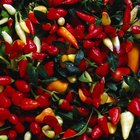
How to Freeze Cherry Peppers
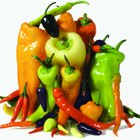
How to Pickle Peppers in Small Batches

Blanching Jalapenos Before Stuffing
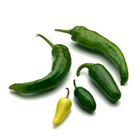
How to Dry Jalapenos
How Many Calories Are in Roasted Red ...

How to Dry Tomatoes in the Oven
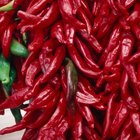
Chinese Hot Pepper Types

How to make Stuffed Jalapeno Peppers ...
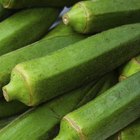
How to Blanch Okra

How to Preserve Bell Peppers for Use ...

Nutrition Facts for Cooked Poblano ...

Can I Eat the Seeds of a Habanero ...

How to Cook Prime Rib Bones in a Slow ...

How to Tell When Okra Is Ripe
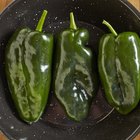
How to Broil Poblano Peppers in the Oven

How to Ripen Red Chili Peppers

How to Preserve Roasted Red Peppers

How to Cook Habaneros
The Best Way to Cook Italian Sausage ...
References
- On Cooking: A Textbook of Culinary Fundamentals; Sarah Labensky, et al.
- On Food and Cooking: The Science and Lore of the Kitchen; Harold McGee
Writer Bio
Fred Decker is a trained chef and prolific freelance writer. In previous careers, he sold insurance and mutual funds, and was a longtime retailer. He was educated at Memorial University of Newfoundland and the Northern Alberta Institute of Technology. His articles have appeared on numerous home and garden sites including GoneOutdoors, TheNest and eHow.
Photo Credits
Jupiterimages/Stockbyte/Getty Images